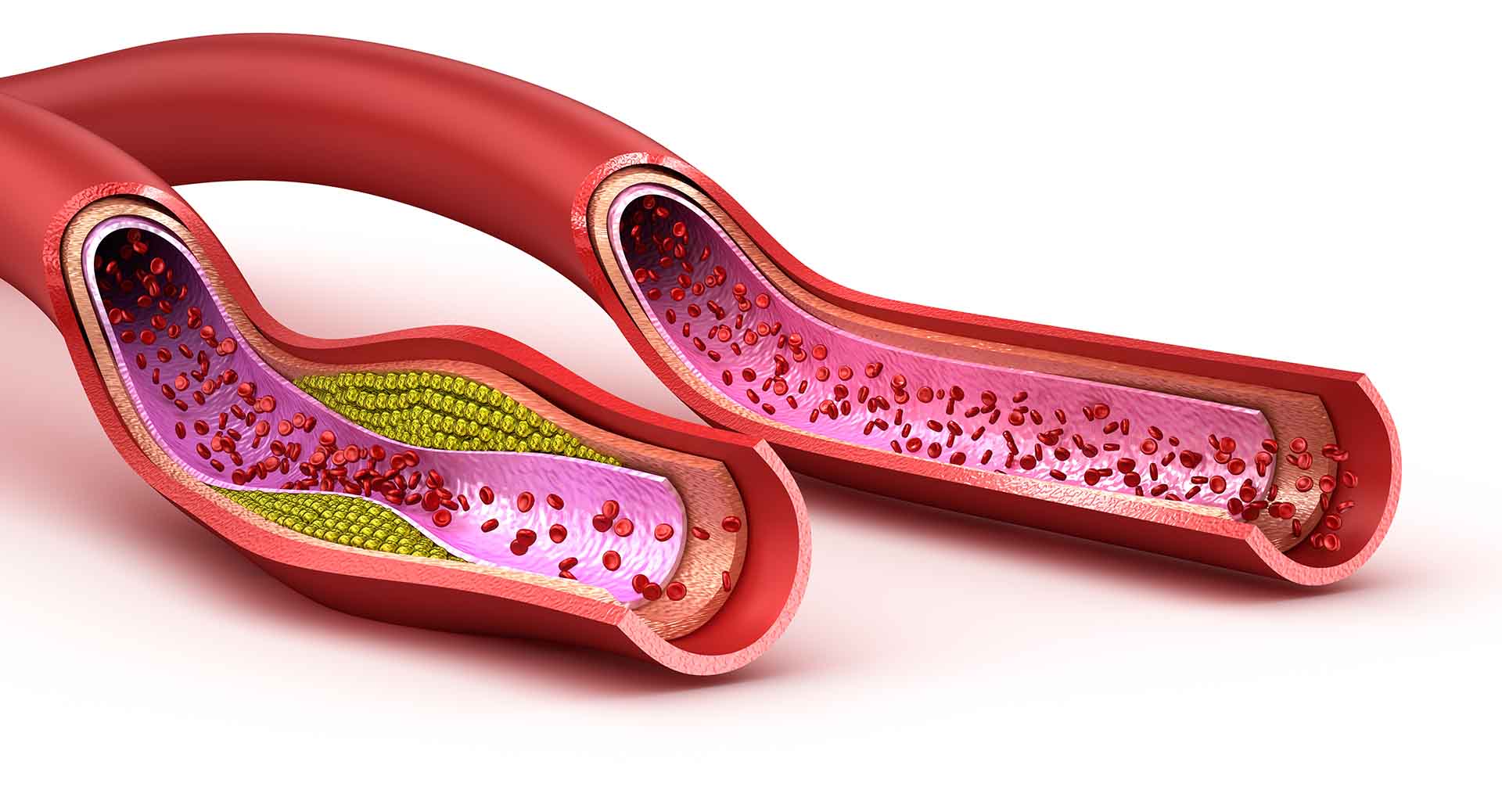5 Tactics To Reduce Cholesterol Quickly
Get the top 5 food and fitness tips recommended by the doctors, dietitians, exercise experts, and other faculty at the Pritikin Longevity Center. Pritikin has been helping people lower cholesterol levels since 1975.
For most of us, there's really no need to pack our medicine cabinets with pills to reduce cholesterol levels. Natural, lifestyle-based strategies have proven extraordinarily effective in reducing cholesterol quickly and permanently.

How To Reduce Cholesterol Quickly
The 5 key lifestyle-change tactics discussed in greater detail below are taught by the physicians, registered dietitians, exercise physiologists, and other faculty at the Pritikin Longevity Center in Miami for fast, significant lowering of cholesterol levels, particularly LDL bad cholesterol. If you’re serious about lowering your cholesterol and taking good care of your heart, these 5 tactics are a great place to start. They’ll also help you shed excess weight, which will also improve heart health.

FOCUS ON FRUITS, VEGETABLES, WHOLE GRAINS, AND BEANS

BE MINDFUL OF FAT INTAKE

Eat more plant sources of protein

EAT FEWER REFINED GRAINS, SUCH AS WHITE FLOUR

GET MOVING

Focus on fruits, vegetables, whole grains, and beans.
Our typical American diet is now abbreviated as SAD (Standard American Diet) by scientists nationwide because it’s full of foods that do sad things to both hearts and waistlines.
Hyperprocessed foods like potato chips and French fries. Sugar-saturated drinks. And fatty, artery-clogging meats and full-fat dairy foods like cheese.
We don’t have to become complete vegetarians to get our cholesterol levels into healthy ranges, studies on the Pritikin Program have found, but clearly, the more vegetables, fruits, potatoes, and other naturally-fiber-rich plant foods we eat, the healthier we’ll be.
Plant foods high in soluble fiber are especially beneficial in lowering total and LDL bad cholesterol levels. Good sources include beans (pinto beans, black beans, etc), yams, oats (yes, eat your oatmeal!), barley, and berries.
For simple tips on bringing more fruits, vegetables, whole grains, and beans into your life, here is a 5-day sample healthy meal plan from the doctors and dietitians at Pritikin Longevity Center.

Be mindful of fat intake.
One type of fat – omega-3 fatty acids – has been shown to protect against heart disease. Excellent sources are cold-water fish like salmon, mackerel, halibut, trout, herring, and sardines.
But do keep in mind that limiting fat intake, even so-called “good” fats like omega-3 fat or Mediterranean-style fats like olive oil, is a good idea because any fat is dense with calories, which means heavy consumption can easily lead to a heavy body. That’s bad news not just for our weight but our hearts because being overweight adversely affects blood cholesterol levels.
Excess weight is linked not just to heart disease but to a staggering list of other woes, including Type 2 diabetes, hypertension, gout, dementia, and many cancers.
SATURATED FATS
TRANS FATS
DIETARY CHOLESTEROL

Eat more plant sources of protein.
Excellent plant proteins include beans – all beans, like lentils, red beans, pinto beans, and soybeans. Rather than raising blood cholesterol levels, as animal sources of protein do, beans actually help lower cholesterol.
Beans also help reduce blood sugar and insulin levels, and may even lower cancer risk. All the below are great choices for your cholesterol profile and overall health.
SOYBEANS
SOYMILK
TOFU

Eat fewer refined grains, such as white flour.
We’re a nation of “white food” eaters – white bread, white rice, white pasta, and white-flour foods like muffins, croissants, bagels, crackers, dried cereals, tortillas, pretzels, and chips. Yes, more than half of many Americans’ typical diets are made up of hyperprocessed refined white flour, often injected with sugar, salt, and/or fat.
That’s a real problem in part because the more white, or refined, grains we eat, the fewer whole grains we tend to take in. Research has found that eating whole grains can help lower both total and LDL cholesterol, and improve heart health.
In Harvard University’s Nurses’ Health Study, for example, women who ate two to three servings of whole-grain products (mostly bread and breakfast cereals) each day were 30% less likely to have a heart attack or die from heart disease over a 10-year period than women who ate less than one serving of whole grains per week.2
When first starting to make the switch from refined to whole grains, many people often feel a bit confused. Where to begin? What’s whole? What isn’t?
The registered dietitians at the Pritikin Longevity Center start with one very simple rule. When looking at products like breads and cereals, they recommend turning the package around and making sure the first word in the Ingredient List is “whole.”
If you see the word “whole” at the top of the list, it’s a good bet that what you’re buying is in fact 100% whole grain, or close to it. Another tip for getting more whole grains in your life comes from the chefs at Pritikin, who teach healthy cooking classes every day at the Center. “Expand your culinary horizons. There are many delicious whole-grain choices in just about every grocery store. Get beyond brown rice!” encourages Executive Chef Vincenzo Della Polla.
“Introduce yourself to a whole new world of flavors with whole grains like whole-wheat couscous, polenta (cornmeal), quinoa, wild rice, and kasha.”
The really good news is that many whole grains are surprisingly quick and easy to prepare. Often, all you need is a pot of hot water and a little stirring action.

Get moving!
Regular exercise may only slightly lower your total and LDL cholesterol levels, but it often does a very good job, in combination with a healthy eating plan like Pritikin, of helping you shed excess weight, which can dramatically improve your cholesterol profile.
Just getting out for a 30-minute walk most days of the week is a great start, but for optimal health and protection from cardiovascular disease, the exercise physiologists at the Pritikin Longevity Center coach people in three key forms of exercise:
AEROBIC EXERCISE
Do aerobic exercise daily, a minimum of 30 minutes and optimally 60 to 90 minutes, alternating moderate-intensity days with vigorous-intensity days. “But don’t think you have to do it all at once,” says Pritikin VP of Fitness Jamie Costello, MSC, MBA. “If you’re pressed for time, something like 15 minutes of brisk walking in the morning, another 15 at lunch, and another 15 after dinner is an excellent alternative.”
FULL-BODY RESISTENCE
sTRETCHING EXERCISES
Concerned about vigorous exercise? Afraid it might be harmful to your heart? Before launching an exercise program, it’s always important to schedule an appointment with your physician to make sure you’re in good shape for cardiovascular workouts. At Pritikin, every guest undergoes treadmill stress testing, plus a 1-hour consultation with one of Pritikin’s board-certified physicians, before starting exercise classes.

OUR TEAM IS READY, ARE YOU?
Are You Serious About Reducing Cholesterol?
the dynamic duo
Eating Well + Exercise
The Stanford University School of Medicine study involved 200 middle-aged Americans, all sedentary and with poor eating habits. Some were told to launch new food and fitness habits at the same time. Others began dieting but waited several months before beginning to exercise. A third group started exercising but didn’t change eating habits till several months later.
All the groups received telephone coaching and were followed for one year. The winning group was the one making food and exercise changes together. The people in this group were most likely to meet U.S. guidelines for exercise (150 minutes per week) and healthy eating (5 to 9 servings of fruit and vegetables per day), and to keep calories from saturated fat at less than 10% of their total intake of calories.
IF LIFESTYLE CHANGES AREN'T ENOUGH...
Don't Rely On Medication Alone
“Drugs like statins can be very effective,” says Dr. Tariq Hafiz, cardiologist and Medical Director at the Pritikin Longevity Center, “but do continue in your efforts to eat well and exercise because a healthy lifestyle can give you far, far more than drugs alone.
“With a healthy living program like Pritikin, you’re not only reducing cholesterol quickly, you’re also creating changes throughout your body that can profoundly improve your overall well-being. You’re reducing blood sugar levels and blood pressure. Other heart disease risk factors like triglyceride fats are also dropping dramatically. You’re also reducing inflammatory factors that sicken arteries. You’re shedding excess weight. And, quite simply, you’re feeling better, much better. Many of our guests at Pritikin tell us, ‘I had no idea I could feel this good again.’ “Can any pill or combination of pills do all of the above? I highly doubt it. But a healthy lifestyle like Pritikin can.”
READY TO LEARN MORE?
Call 800.327.4914
Sources
Archives of Internal Medicine, 1991; 151: 1389.
American Journal of Clinical Nutrition, 1999; 70 (3): 412.
Annals of Behavioral Medicine, 2013; published online April 21.